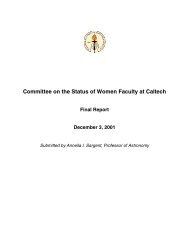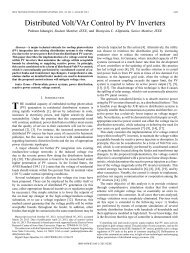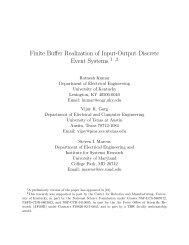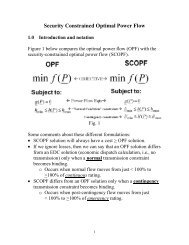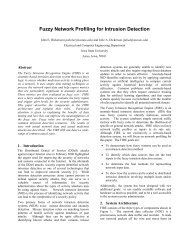Linearized Analysis of the Synchronous Machine for PSS Chapter 6 ...
Linearized Analysis of the Synchronous Machine for PSS Chapter 6 ...
Linearized Analysis of the Synchronous Machine for PSS Chapter 6 ...
You also want an ePaper? Increase the reach of your titles
YUMPU automatically turns print PDFs into web optimized ePapers that Google loves.
Excitation system torque:<br />
This is <strong>the</strong> electrical torque that results from <strong>the</strong> K 5 and K 6 loops,<br />
as shown in Fig. 7 below.<br />
Fig. 7<br />
This torque may be expressed based on <strong>the</strong> block diagram as:<br />
K<br />
2<br />
K<br />
3<br />
Δ Texc<br />
=<br />
Ge<br />
( s)<br />
( ΔVref<br />
− ΔVt<br />
)<br />
1 + sτ<br />
'<br />
d 0<br />
K<br />
3<br />
Ignoring ΔV ref (it represents manual changes in <strong>the</strong> voltage<br />
setting), and using (from eq. (**)):<br />
we obtain<br />
K<br />
ΔVt = K5Δδ<br />
+ K6ΔE' q<br />
K<br />
G ( s )<br />
( − K Δδ<br />
− K ΔE'<br />
)<br />
2 3<br />
ΔTexc<br />
=<br />
e<br />
5<br />
6<br />
1+<br />
sτ'<br />
d 0<br />
K3<br />
We want to express each torque as a function <strong>of</strong> ∆δ or ∆ω. But <strong>the</strong><br />
last expression has a ∆E’ q . We can address this by noticing <strong>the</strong><br />
q<br />
12




